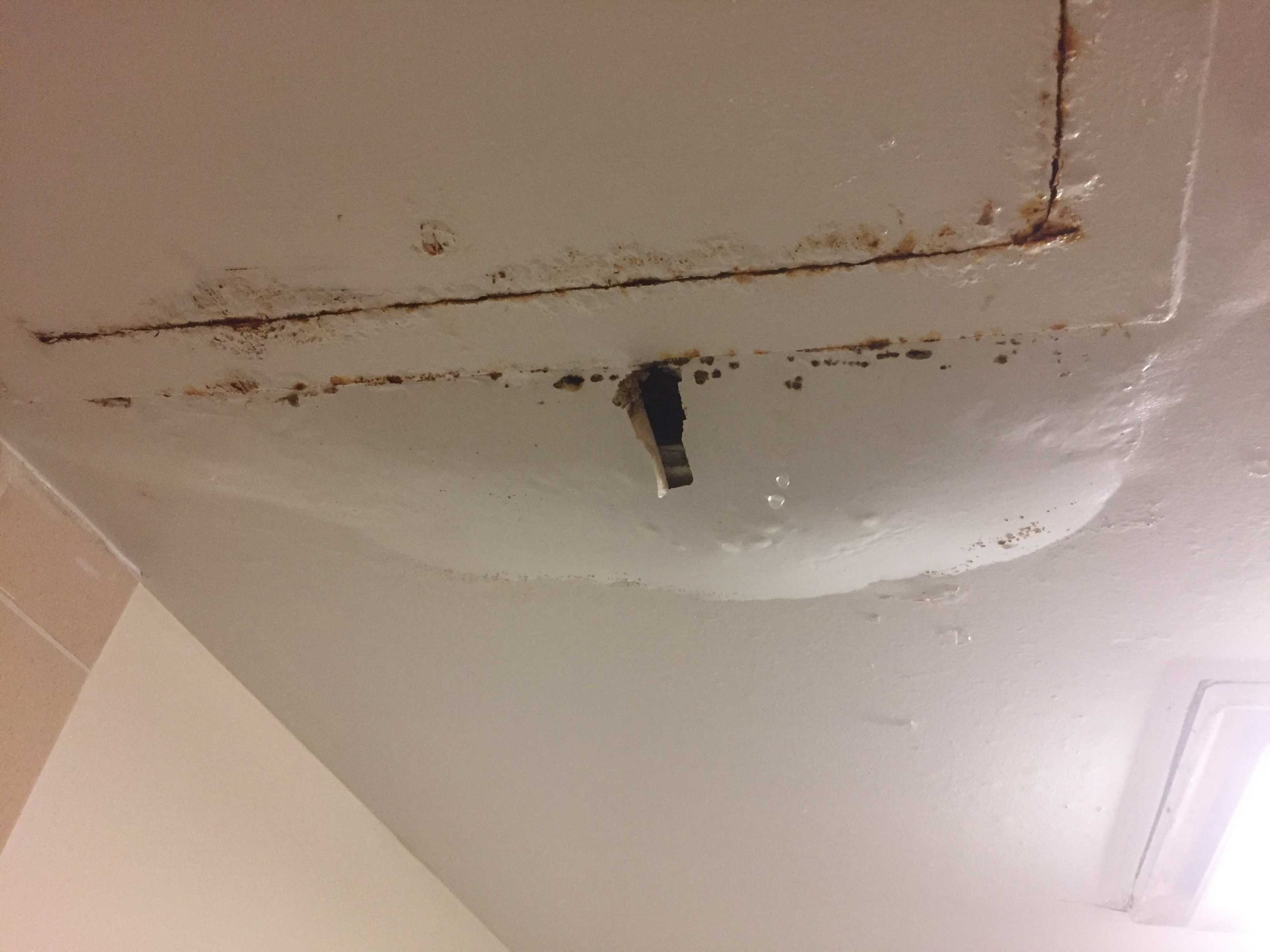Discovering a Leaky Ceiling in Your Apartment can be a stressful situation for any tenant. In this comprehensive guide, we’ll delve into the causes, potential damages, and effective solutions for addressing a leaky ceiling in your apartment. Whether you’re a seasoned renter or a first-time tenant, understanding the intricacies of this issue is crucial for maintaining a safe and comfortable living space.

Identifying the Culprit: Common Causes of a Leaky Ceiling in Apartments
1. Roof Leaks
One of the primary culprits behind a leaky ceiling is a compromised roof. Roof leaks can occur due to damaged shingles, deteriorated flashing, or clogged gutters. When water penetrates the roof’s protective layers, it can find its way into the apartment, causing damage to the ceiling and surrounding areas.
Leaky pipes or plumbing fixtures within the apartment itself can lead to water seepage into the ceiling. This can occur in bathrooms, kitchens, or any area with plumbing connections. Identifying and addressing plumbing issues promptly is essential to prevent further damage to the ceiling and potential mold growth.
3. Condensation Problems
In some cases, condensation can be mistaken for a roof or plumbing leak. Poor ventilation, especially in areas like bathrooms and kitchens, can lead to excessive moisture in the air. Over time, this moisture can accumulate on the ceiling, creating the appearance of a leak. Adequate ventilation and proper insulation are key to addressing condensation-related issues.
Understanding the Severity: Potential Damages Caused by a Leaky Ceiling
1. Structural Damage
Continued water intrusion can compromise the structural integrity of the ceiling and surrounding walls. This may lead to sagging, warping, or even collapse if left unaddressed. Structural damage poses a significant risk to the safety of the apartment.
2. Mold Growth
A leaky ceiling creates an ideal environment for mold growth. Mold thrives in damp and dark conditions, and the presence of water from a leak provides the necessary moisture. Mold not only damages the ceiling aesthetically but also poses health risks to occupants, making prompt remediation crucial.
3. Electrical Hazards
If the leak reaches electrical components within the ceiling, it can pose a severe hazard. Water and electricity do not mix well, and any compromise to the wiring within the ceiling can result in short circuits, electrical fires, or other dangerous situations.
Facing the Issue Head-On: Steps to Address a Leaky Ceiling
1. Report the Issue to Your Landlord
As a tenant, it is essential to notify your landlord or property management as soon as you notice a leaky ceiling. Provide detailed information about the location and severity of the issue. Prompt reporting enables the landlord to take immediate action to assess and address the problem.
2. Document the Damage
Take photographs or videos of the leak and any resulting damage. This documentation can serve as evidence of the issue’s severity and progression. It may be useful in discussions with your landlord, especially if the situation requires legal attention.
3. Mitigate Further Damage
While waiting for professional assistance, take steps to mitigate further damage. Place buckets or containers under the leak to catch dripping water. If there is visible sagging in the ceiling, use a pole or other support to prevent potential collapse. Avoid using electrical appliances near the affected area.
Seeking Resolution: Landlord Responsibilities and Tenant Rights
1. Landlord’s Responsibility
In many jurisdictions, landlords are legally obligated to maintain the habitability of rental properties. This includes addressing issues like a leaky ceiling promptly. Landlords typically need to hire professionals to assess and repair the problem, ensuring the safety and well-being of the tenants.
Tenants have the right to a habitable living space. If a landlord fails to address a leaky ceiling within a reasonable time frame, tenants may have legal recourse. It’s essential to familiarize yourself with tenant rights in your jurisdiction and, if necessary, seek advice from legal professionals or tenant advocacy organizations.
Preventive Measures: Avoiding Future Leaks in Your Apartment
1. Regular Inspections
Perform regular inspections of your apartment, paying attention to the ceilings and walls. Look for any signs of water stains, discoloration, or sagging. Early detection allows for prompt action before a minor issue escalates into a major leak.
2. Communicate with Your Landlord
Maintain open communication with your landlord regarding any concerns related to potential leaks. If you notice a small issue, such as a water stain, report it immediately. Timely communication can prevent more significant problems down the line.
3. Be Mindful of Maintenance
Practice good maintenance habits within your apartment. Promptly report any plumbing issues, avoid overloading shelves or hanging heavy items from the ceiling, and be cautious when using water-intensive appliances.
Read too: Exploring What Causes Ceiling Cracks and How to Address Them: Unveiling the Mysteries
Conclusion: Safeguarding Your Apartment from Leaky Ceiling Woes
In conclusion, a Leaky Ceiling in Your Apartment is a challenge that requires swift and decisive action. By understanding the causes, potential damages, and necessary steps for resolution, tenants can safeguard their living spaces and work collaboratively with landlords to address the issue effectively.
Remember, the key to mitigating the impact of a leaky ceiling is early detection and proactive communication. By staying vigilant and addressing the problem promptly, you can maintain a safe, comfortable, and leak-free living environment.
